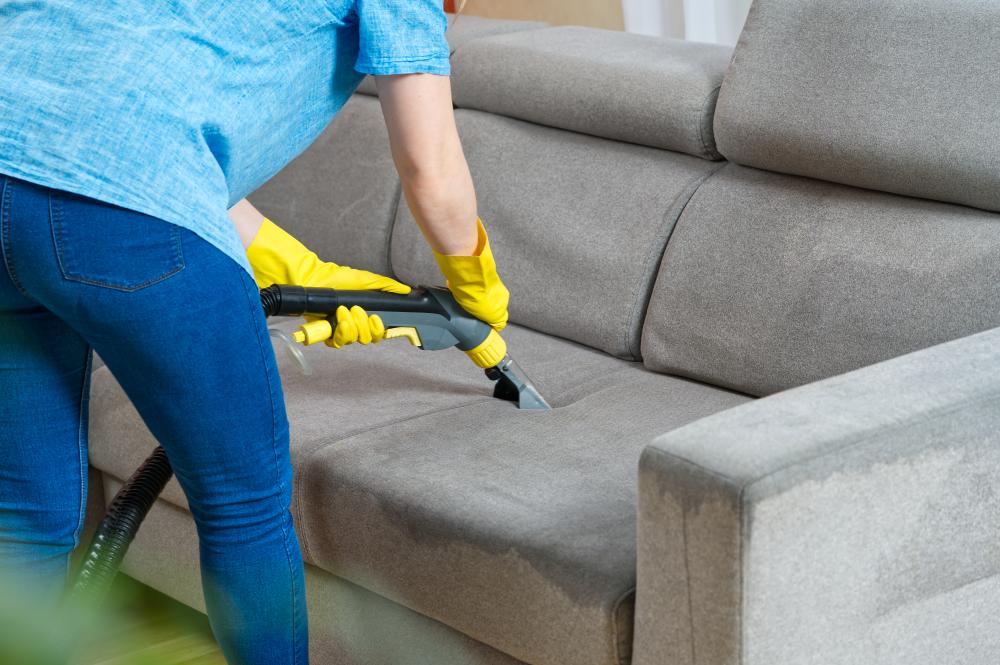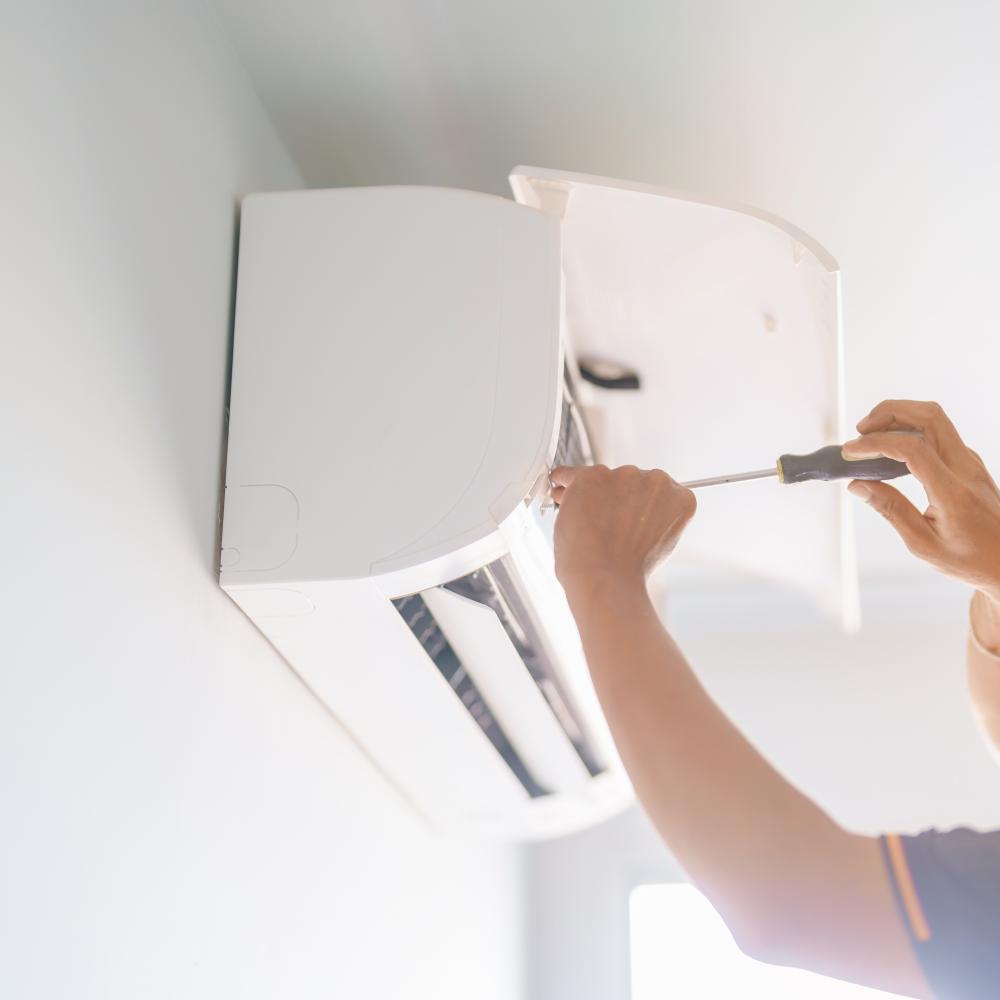
Understanding Your Upholstery
As a company committed to delivering the best cleaning services, we know that extending the life of your upholstery with proper cleaning starts with understanding the material. Upholstered furniture can be made from leather, fabric, velvet, or synthetic blends, each requiring specific care. Recognizing these nuances is crucial in maintaining their appearance and longevity.
Leather, while durable, needs regular conditioning to guard against cracks. Fabric demands vacuuming and gentle spot-cleaning to preserve its colors. Velvet requires a delicate touch to maintain its texture. Synthetic blends are often more resistant but benefit from routine cleaning to prevent wear. Knowing these details helps us tailor the best cleaning strategies for your specific needs.
Remember, knowledge is power. Understanding your upholstery is the first step in extending its life.
Daily Upkeep Tips
Regular maintenance is vital in extending the life of your upholstery with proper cleaning. Everyday care routines prevent dirt and grime from embedding deeply into the fibers, which can otherwise accelerate wear. To make it easy, develop a simple cleaning habit that fits seamlessly into your lifestyle.
Start with a quick vacuum of your upholstery weekly. This action tackles dust and debris before it settles. In our experience, moving pillows and flipping cushions distributes wear evenly, preserving the upholstery's plumpness. Often overlooked, taking these small steps can make a significant difference.
Quickly attending to spills is equally important. Promptly blot using a white cloth to avoid staining. Acting swiftly ensures that stains do not seep in and compromise the fabric.
Seasonal Cleanings
Beyond daily care, seasonal cleanings provide a deeper refresh for your upholstery. This practice targets grime and allergens that evade routine maintenance. Typically, a thorough seasonal cleaning effectively extends the life of your upholstery with proper cleaning.
Utilizing professional services brings expertise and advanced equipment to the table. Our team, for instance, employs non-toxic agents that cleanse without harming the fabric. Choosing safe cleaning products is crucial in preserving upholstery, ensuring it remains vibrant and robust across seasons.
Making seasonal cleanings a priority not only revitalizes the furniture but also safeguards your investment for the long term.
Adopting a methodical approach encourages a seamless maintenance routine, preserving upholstery’s health and appearance.
Protecting from Environmental Damage
Environmental factors such as sunlight and humidity can significantly affect upholstery. To extend the life of your upholstery with proper cleaning, make it a habit to protect furniture from these elements. Sun exposure can fade colors and weaken fibers, while moisture can lead to mold and odors.
Strategically placing your furniture away from windows is an effective strategy. Alternatively, use curtains to shield them from harsh sunlight. Investing in UV-protective window films is another practical solution.
Additionally, controlling humidity levels in your space helps prevent mold damage. A dehumidifier can be invaluable during damp seasons. Such preventive measures create a sustainable environment that prolongs your upholstery’s lifespan.
Choosing the Right Cleaning Products
Our expertise emphasizes selecting the right cleaning products as an integral part of extending the life of your upholstery with proper cleaning. Different materials respond uniquely to cleaners, making it vital to choose wisely.
Leather conditioners keep the material supple, while specialized fabric cleaners tackle stains without damaging the fibers. Avoid using harsh chemicals that can degrade the material over time. Always test a small area before applying any cleaner broadly.
Sometimes, it’s beneficial to consult with professionals to determine the best practices for cleaning your specific type of upholstery. Trusting expert advice ensures that your care routine aligns with the furniture’s needs.

Understanding Upholstery Codes
Before diving into the upholstery cleaning tips, it's crucial to understand upholstery codes. These codes guide us in selecting the correct cleaning products. At Fresh Flare Cleaning Services, we always begin by examining these codes. The 'W' code allows the use of water-based cleaning agents. On the other hand, 'S' indicates that solvent-based cleaners are necessary. 'WS' means both options work, but caution is advised. Finally, 'X' signifies that only vacuuming is safe.
By deciphering these codes, we avoid damaging the fabric and ensure effective cleaning. It's a small step that makes a significant difference. Always check the furniture labels before proceeding with any cleaning solution. This preventive measure saves time and maintains fabric integrity.
Essential Cleaning Supplies
Having the right tools ensures efficiency in upholstery cleaning. Here's our go-to list at Fresh Flare:
- Vacuum with upholstery attachment
- Gentle laundry detergent or upholstery cleaner
- Microfiber cloths
- Soft-bristled brush
- Steam cleaner
Each item plays a vital role. The vacuum clears dust and debris, setting the stage for deeper cleaning. Detergents and cleaners lift stains without harming the fabric. Microfiber cloths are perfect for blotting and applying solutions, thanks to their absorbency. Meanwhile, a steam cleaner offers a deeper clean, without soaking the material.
Routine Cleaning Practices
Regular cleaning is key to prolonging the life of your upholstery. At Fresh Flare, we suggest vacuuming upholstery weekly. This practice prevents dust buildup and allergens.
Monthly, it's wise to perform a more thorough cleaning. Use upholstery cleaning tips such as applying a gentle detergent mixed with warm water. Ensure you wring out your cloth well to avoid over-saturating the material. This approach helps to maintain freshness and prevents grime from settling.
Tackling Stubborn Stains
Despite our best efforts, stains can occur. Acting swiftly is crucial. Begin by blotting the stain with a microfiber towel. Never rub, as this can spread the stain. Depending on the type of stain, different methods apply.
For instance, oil-based stains require a solvent. Apply gently and allow it to dry to observe the fabric's response. For water-based stains, dilute them immediately with vinegar or even vodka, which dissipates upon drying. If all else fails, a touch of steam can loosen the stain, making it easier to treat.
Remember, different fabrics react differently. Always conduct a spot test to ensure safety.
Caring for Upholstered Furniture
Prevention is just as important as cleaning. Protect your furniture by using covers, especially in high-traffic areas. This simple practice shields your upholstery from spills and daily wear.
For odor control, sprinkle baking soda on cushions, leave it for a few minutes, then vacuum. This method refreshes upholstered furniture and neutralizes odors. Additionally, position furniture away from direct sunlight to prevent fading.
At Fresh Flare Cleaning Services, we stress the importance of adhering to these upholstery cleaning tips. With these strategies, you can extend the life of your furniture while keeping it looking its best.
Choosing the Right Materials
Prolonging upholstery lifespan begins with choosing the right materials. Different fabrics have varying durability levels. Leather, for instance, is known for its long-lasting nature. It ages gracefully and adds elegance to any space. However, it needs regular conditioning to maintain its suppleness.
Fabric options like microfiber and polyester blends offer versatility and ease of maintenance. These are excellent for households with children or pets due to their stain-resistant properties. They require less rigorous upkeep compared to natural fibers.
Investing in high-quality upholstery materials from the start ensures a more resilient piece. This foundation makes it easier to implement maintenance strategies effectively.
Consistent Cleaning Habits
Maintaining consistent cleaning routines significantly contributes to prolonging upholstery lifespan. Routine vacuuming prevents dust and dirt buildup. These particles can wear down fabric fibers over time. Using soft-bristled attachments is crucial. This avoids snagging or tearing delicate materials.
Regularly addressing spills is equally important. Prompt action prevents stains from setting in. Simply blotting the area with a clean cloth can often suffice. Avoid rubbing the stain, as this may spread it further.
For deeper cleaning, professional services can be an excellent choice. They ensure thoroughness and use specialized equipment to restore upholstery's original appearance.
Protecting Against Wear and Tear
Implementing protective measures is vital to prolong upholstery lifespan. Using furniture covers or throws can shield against everyday wear. These simple additions offer a layer of defense from stains and pet hair.
Another effective strategy is rotating cushions regularly. This practice helps distribute wear evenly, preventing any single area from bearing too much pressure. Such rotation is particularly beneficial for cushions on frequently used seats.
Additionally, placing furniture away from direct sunlight helps maintain vibrant hues. Prolonged sun exposure can fade colors and weaken materials over time.
Strategies for Different Usage Levels
Understanding the usage level of your furniture helps tailor maintenance. For lightly used pieces, routine dusting and vacuuming are often sufficient. These spaces usually require minimal intervention unless accidental spills occur.
Moderate use typically involves more consistent cleaning and occasional spot treatments. This ensures any dirt accumulation is managed before it becomes problematic. Implementing these practices keeps the furniture looking fresh.
However, heavy use scenarios demand extra attention. Families with pets or children should prioritize regular deep cleaning. Using protective sprays can also help repel stains and simplify cleaning tasks.
Integrating Repair and Restoration
Tackling minor damages early can drastically prolong upholstery lifespan. Simple repairs, such as sewing small tears, can prevent further deterioration. Fabric glue or iron-on patches offer quick solutions for minor rips.
For sagging cushions, consider adding foam inserts. These provide additional support and revive the furniture's comfort level. It's a simple fix that can make a noticeable difference.
In cases of significant damage, professional restoration can be worthwhile. Experts can handle intricate repairs and revitalize your furniture's appearance, thus extending its usability.

How do professionals clean upholstery?
At Fresh Flare Cleaning Services, our approach to cleaning upholstery is as much about understanding the material as it is about the cleaning process itself. We start by identifying the fabric type and checking any upholstery codes to tailor our cleaning strategy. For instance, if the upholstery is marked with a 'W', we use water-based cleaning solutions, whereas an 'S' indicates the need for solvent-based products.
We utilize industrial-grade vacuums with upholstery attachments to remove loose dirt and debris. For deeper cleaning, we employ non-toxic cleaning agents that are safe yet effective. Steam cleaning is another method we use, which sanitizes fabric while preserving its integrity. Our team is trained to handle delicate materials like velvet and leather with the necessary care to avoid damage.
After cleaning, we often apply a protective layer to guard against future stains and wear. This comprehensive process not only cleans but revitalizes the upholstery, extending its life. If you're curious about what method would be best for your upholstery, we're happy to discuss it further.
How to extend the life of a couch?
Extending the life of a couch involves a mix of regular maintenance and strategic protection. From my experience at Fresh Flare, I advise beginning with routine vacuuming to prevent dust settlement. Flipping cushions regularly also helps distribute wear evenly, keeping them plush over time.
Incorporate spot cleaning into your routine. Address spills immediately with a white cloth and an appropriate cleaner to prevent stains from setting. For added protection, consider using a fabric protector spray to repel spills and stains.
Positioning your couch away from direct sunlight helps preserve its color and fabric. If that's impossible, using UV-protective films on windows might be a wise investment.
Finally, don't underestimate the importance of seasonal professional cleanings. They tackle deep-seated dirt and allergens that daily care might miss. By adopting these practices, you not only extend the life of your couch but also maintain its aesthetic appeal.
How do you revive old upholstery?
Reviving old upholstery can breathe new life into your furniture and your space. The first step we recommend at Fresh Flare is a thorough cleaning, targeting both surface dirt and deep-seated grime. A professional cleaning service can use steam cleaning or dry cleaning methods to restore fabric vibrancy without damage.
If the upholstery has minor tears or wears, simple repairs like sewing or using fabric glue can work wonders. For sagging cushions, consider replacing the foam inserts to regain that fresh feel.
Refreshing the appearance can also involve repositioning furniture to minimize further wear and adjusting lighting to highlight its best attributes. Sometimes, adding decorative elements like throws or pillows in contrasting colors can make the old feel new again.
What’s your biggest challenge with old upholstery? We’d love to hear your thoughts and offer personalized advice.
What is the best thing to clean upholstery with?
Choosing the right cleaner depends on the type of upholstery you're dealing with. Generally, a gentle upholstery cleaner that's appropriate for the fabric type is the best choice. For leather, a specialized conditioner not only cleans but also maintains suppleness, preventing cracks.
For fabric and synthetic blends, mild detergents or specialized fabric cleaners are effective. They remove stains without compromising the fibers. Always perform a spot test before applying any cleaner broadly to ensure compatibility.
For at-home cleaning, mixing a small amount of dish soap with water can be an effective, gentle cleaner for most fabrics. Microfiber cloths are excellent for applying solutions and blotting stains due to their absorbent qualities.
If you're ever uncertain, consulting professionals can provide peace of mind. We can recommend products that align with your specific upholstery needs, ensuring both safety and effectiveness.
#### Resources for Upholstery Care and Maintenance Tips {#resources-section}- U.S. Environmental Protection Agency (EPA) – Offers resources on non-toxic cleaning products and environmental factors affecting indoor air quality.
- USA.gov – Official guide to government information and services, including consumer advice on home maintenance and product safety.
- Mayo Clinic – Provides insights on maintaining a healthy home, useful for understanding allergens in upholstered furniture.
- Penn State Extension – Features educational resources on home care, including best practices for cleaning and maintaining furniture.
- National Park Service (NPS) – Offers advice on preserving historical furnishings, applicable to extending the life of modern upholstery with proper care methods.
- Centers for Disease Control and Prevention (CDC) – Provides guidelines on maintaining a clean and safe home environment, which includes upholstery cleaning tips.




